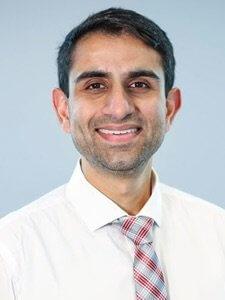
In response to a wide array of cardiovascular complications seen in patients with COVID-19, the Duke Health system has developed a framework which organizes its approach to caring for patients with COVID-19-related myocardial injury, heart failure, arrhythmias, and more.
A recently published paper in American Heart Journal led by DCRI fellow Rahul Loungani, MD (pictured left), under the mentorship of Duke Heart Center Chief and DCRI faculty member Manesh Patel, MD (pictured right), details care pathways established in the Duke Health system for managing patients with cardiovascular complications caused by COVID-19.
“The model presented can provide a framework for other institutions to organize their own approaches and can be adapted to local constraints, resource availability, and emerging knowledge,” the authors write. Additional DCRI authors on the paper include Robert Mentz, MD; Schuyler Jones, MD; Sreekanth Vemulapalli, MD; and Jonathan Piccini, MD, MHS.

Cardiologists have seen a wide range of cardiovascular complications related to the novel coronavirus. Patients with a history of cardiovascular disease who contract COVID-19 are more likely to become critically ill, and potential therapies may also cause complications. The disease has also been known to directly result in complications, including myocardial injury, heart failure, and arrhythmias.
The Duke Division of Cardiology, in partnership with the Duke Heart Center, decided to create a care pathway for patients with COVID-19 to organize its approach to cardiovascular complications and “to streamline care, limit risk to personnel, ensure provision of limited resources (including diagnostics, invasive procedures, and service lines), and align clinical care across multiple divisions.”
The pathway outlines a framework for triaging and caring for patients based on the symptoms that have been seen within each group of complications. Not only is the framework helpful in providing advice for cardiologists, but it also helps provides clear guidance to frontline providers who may not routinely administer cardiovascular care. The model also advises that for high-risk phenotypes, clinicians should consider the opportunity to enroll these patients in clinical trials.
“The pathway we developed is based on expert opinion and the current evidence we have available, and our response will continue to evolve as new evidence emerges,” Loungani said. “In the meantime, we hope that by sharing this pathway, we can help other health systems in shaping their response to the wide-ranging cardiovascular impacts of COVID-19.”
Patel added, “We are all learning about COVID-19 at a rapid pace, and we appreciate the opportunity to share information and update approaches as we all work to help our communities.”